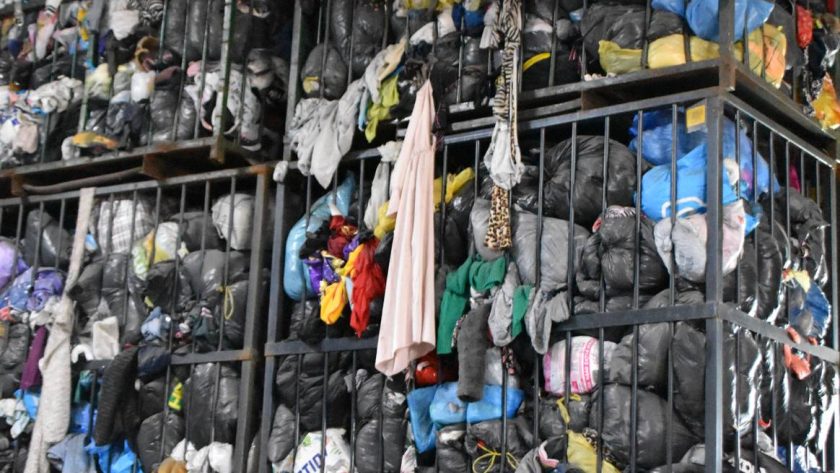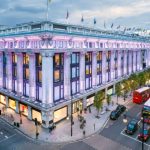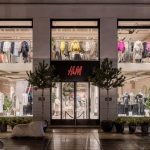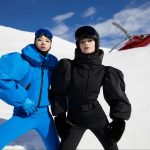A powder pink gala dress hangs alone, conspicuously out of place among the many iron cages filled with garment waste. Despite appearing as good as new and seemingly fit for a new owner, this garment has found its way into a clothing recycling bin.
The sight of a massive hall brimming with discarded clothing is striking. The immense size of the space and the sheer volume of items transform the scene into a vibrant tapestry. Brand-new pieces protrude from compressed bales, barely worn shoes are scattered on the floor, and occasionally, items that don’t belong are mistakenly included. It’s a stark reminder of the significant issue of garment waste, a problem that demands attention, despite our preference for a more optimistic opening. Thankfully, entrepreneurs are dedicating efforts to address this challenge.
Article continues after image.
Sorting Galore: Inside a Dutch Garment Recycling Facility
It’s a chilly Tuesday morning in Wormerveer. Invited by Brightfibre Textiles and Loop.a life, FashionUnited visits the recycling facility. Coincidentally, a truck arrives at the same time, loaded with bales of clothing deemed still wearable. These items aren’t immediately recycled but sent to external parties for a potential second life. However, before any decisions are made, sorting is essential.
Article continues after images.
The facility’s process involves several steps. Initially, there’s coarse sorting: clothes, shoes, electronics, and other items are mixed in the deliveries. “People often toss everything into the bags they bring to the clothing point,” comments Ellen Mensink of Loop.a life and Brightfiber Textiles during the tour. “ People think: Waste is waste, right?” Contrary to what some might believe, this initial sorting isn’t automated; it’s all done manually. About 40 people work daily at the facility, and with time, they often develop specialties. For instance, some individuals focus on sorting specific clothing categories, swiftly determining an item’s condition and suitability for certain target groups or countries.
After filtering out non-clothing items and ensuring the garments are neither broken nor dirty, the clothes are sorted by type – women’s outerwear, jeans, socks, jackets, etc. It’s important to note that clean, intact items aren’t processed further at this facility. Instead, they are categorized and baled, often destined for locations abroad, occasionally domestically.
Dutch Clothing Waste: Brightfiber Textiles and Loop.a Life Aim to Locally Process Residual Streams
After much sorting, we reach the items that can no longer be reused in their current form. These items are directed to the Fibersort machine in Wormerveer, where the process shifts from manual to mechanical. The Fibersort machine, for those unfamiliar, uses two different cameras to scan garments, determining their composition – for instance, the percentage of cotton or polyester, as well as their color. Once identified, the item is placed on a conveyor belt and sorted into different bins based on its category and color. This sorting method ensures that the final recycled fibers have a uniform color, eliminating the need for dye in producing colored yarns.
Article continues after image.
Contrary to popular belief, it’s not just mono-material items (made from a single type of material) that can be recycled. “Simpler processes are possible like that, but we can also handle specific compositions,” explains Mensink. Take a cotton-polyester blend, for example. As long as the items have a consistent ratio – say, 65% cotton and 35% polyester – they can be reprocessed into new fibers and yarns. “We can produce yarns from these blends.” However, items comprising multiple materials pose a greater challenge in matching exact compositions and gathering sufficient volume for yarn production. “Items with six different materials, for instance, become exceedingly complex.”
Unfortunately, many items remain unmatched by the Fibersort machine. These materials are currently downcycled, a common fate for many garments that bypass the recycling process and end up as waste. Downcycling involves using the fibers for other purposes, like pillow stuffing, rather than creating new garments. Mensink expresses her ambition to process a greater variety of material streams with Brightfiber Textiles, hoping to increase the number of items that can be recycled in the future.
The sorting process in Wormerveer doesn’t stop there. With the Trimclean machine, zippers and buttons can be removed from garments. After color and composition sorting, the items are cut into smaller pieces. These go through a detector equipped with a metal detector and camera (since not all buttons and zips are metallic) to remove parts with buttons and zippers. What remains are fabric pieces ready for fiberization. Eventually, these fibers are transformed into new yarn, suitable for creating cloth and new garments.
Article continues after image.
Clothing waste: ‘The problem can also be the solution’
Ellen Mensink and Dhyana van der Phols are driven by a shared passion: addressing the garment waste problem. Mensink is originally a business economist and researched various circular business models for various sectors. Once she dove into a circular business model for the fashion industry, she saw how many waste streams there were. “In every circular chain, waste comes back,” she said. She wanted to do something with that stream, the post-consumer garment waste. “The problem can also be the solution,” she says enthusiastically.
Article continues after images.
To demonstrate the viability of recycled textiles to brands and consumers, Mensink established Loop.a life. This brand not only showcases the potential of recycled materials but also emphasizes sustainable practices. For instance, Loop.a life opts for knitting over weaving to conserve electricity. This is why Loop.a life, for example, chooses to knit with the materials, instead of weaving. “Weaving consumes more electricity than knitting,” says Mensink. Mensink is also very transparent: “We don’t go for items with 100% recycled materials, what we do go for is 100% circular. Everything we receive, we process.” The entrepreneur also indicates that the company has created a lifecycle analysis of the production process. This will allow it to indicate how much CO2 and water is saved with each garment. This will also be communicated to consumers from 2024.
Loop.a life is also already experimenting with compositions. For instance, the brand once started with wool, but introduced Cotton2Cotton, made of recycled cotton, a few years back. For each composition and material, the brand is now looking at options. With its collections, Loop.a life wants to show what possibilities there are with recycled fibres.
Recycling clothes locally: It can be done
Loop.a life champions local recycling efforts, collaborating with brands like King Louie and State of Art to transform second-hand items into new knitwear. These collaborations not only leverage Loop.a life’s expertise but also ignite a growing interest in recycling within these brands. Open to new partnerships, Loop.a life continually seeks ways to mitigate the garment waste problem through innovative recycling solutions.
Mensink and Dhyana van der Phols also foster local partnerships. These collaborations span across the Netherlands, Europe, and Turkey, embodying a truly closed-loop system where everything received is processed and reused. In 2024, this vision will take a significant leap forward with the opening of a new facility in Amsterdam. Mensink’s Brightfiber Textiles will inaugurate a circular raw materials factory, specializing in fibers derived from local residual streams. This ambitious project aims to produce an impressive 2.5 million kilograms of textiles annually.
If it is up to the entrepreneurs, the Netherlands will regain a thriving textile industry in which the clothing waste stream also has a place in the production of new items. Their dedication is unwavering, but the realization of this vision requires a collaborative effort from the entire industry.



